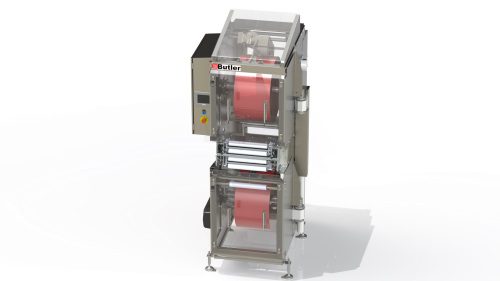Butler Automatic has developed an enhanced register sensor for new and existing SP1 Automatic Film Splicers, which improves upon the previous sensor’s accuracy and reliability, and features software that more precisely controls the splice position, thereby reducing packaging film waste.
The register sensor in the SP1 Automatic Film Splicer uses registration marks on the film to provide an automatic, in-registration butt splice.
In doing so, the splicer provides the downstream process with a consistent product pitch or imprint spacing, eliminating the need for re-registering the film in the process after a splice.
The register sensor is critically important to minimizing film waste.
Butler’s register sensor delivers a wider range of sensing and has proven to be more reliable in distinguishing between similar colors than the prior generation.
As a result, manufacturers can print across the full width of the film, even when the print is similar in color to the black register marks.
Additionally, while the prior design required the operator to physically relocate the sensor in the in-web direction when adjusting between products of different length or pitch, the new control software allows the operator to achieve the same result simply by entering an offset value on the touch screen user interface.
This enhancement allows operators to locate the splice in different positions on the final product more easily.
The new register sensor is available as an option on any new Butler SP1 Automatic Splicer.
It is also available for retrofit with any Butler SP1 Splicer that shipped with the factory-installed Bi-Directional Registered Splice Option and also has a touch screen user interface.
In these machines, it provides the full functionality when installed as a retrofit.
The retrofit includes replacement of the sensor head with the new head and amplifier, and upgraded controls and user interface software to support the registration offset functionality.










